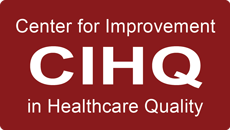

The concept of consumerism is making its way into every facet of our lives. We’ve been rating hotels, restaurants, and online purchases — and relying on other people’s ratings to influence our decision-making — for many years. But nowadays consumers have the chance to rate almost everything they come into contact within the public sphere, from the cleanliness of public bathrooms to the service provided by a taxi driver.
Healthcare is no exception. More and more, we are seeing a shift toward envisioning patients as consumers, with benefits on both sides of the care equation. Patients get the opportunity to influence and provide feedback to their providers. And providers, in turn, can use the data from this engagement to become more responsive and proactive in how they deliver their services. As healthcare organizations continue to embrace the idea of patients as customers – they can look to the precedent set in other industries in order to improve this relationship.
A vast amount of information lies within the data healthcare organizations currently have that can be leveraged to personalize experiences and improve care delivery. Additionally, patient expectations are drastically changing due to the pandemic, access to technology, and generational preferences.
By actively listening to patients, uncovering experience gaps, and understanding how expectations differ by segment and patient population, you can tailor engagement to the individual and ensure positive outcomes. We’ve found these are the best practices that translate between customer experience and patient experience.
Activate your existing patient experience data (and unlock hidden insights)
Truly innovative organizations that are embracing customer or patient centricity know that simply monitoring or understanding patient preferences is not enough. How organizations outside of healthcare excel when they harness existing data to segment their customers and reallocate resources to improve service. Borrowing a concept from customer experience, journey mapping allows you to understand experiences through the customer’s eyes. You need to know what the customer is trying to accomplish and ask yourself “how are we meeting that need now and where do we want to be?” Choose your focus area, outline all of the checkpoints patients deem impactful, then map your experience and segmentation data. Once you understand your current state, you can work towards a desired future state, see where you’re overinvesting, and improve areas that matter most to patients.
Novant Health is an organization that has focused on understanding the highs and lows of patient journeys to design and reinforce world-class experiences. With Feedtrail, they rapidly tested new ideas, gathering patient feedback at crucial moments to inform their efforts. If done correctly, journey mapping leverages your experience data to guide efforts and allow customer centricity to permeate the organization.
Think of the patient experience holistically
It’s easy to think of the “patient experience” solely as when the patient is in a hospital bed receiving care, but it goes far beyond that. It includes when the patient is looking to book an appointment, on the way and thinking about where to park, in the waiting room, being transferred from one unit to another, awaiting the results of an exam, and even when the patient leaves the hospital or doctor’s office and the follow-up they receive. A positive experience depends on so many additional factors, small moments, and many more stakeholders than just doctors or nurses at the bedside. Engaging patients pre, during, and post encounter to encompass the whole journey is key to understanding what patients are going through to tailor your processes and communication.
Savvy organizations know that patients form opinions, and develop trust, before an encounter even starts. Some organizations leverage real-time surveys to understand patient feedback around first impressions, care transitions, and discharge communication, so they can perform service recovery and solve problems before the patient has left. This communication improves experiences and prevents unexpected negative comments from surfacing in reviews or post-discharge surveys. Sending immediate post-discharge surveys can help providers fill in the gaps that traditional surveys miss by asking not only questions relevant to your initiatives, but also to the patient’s demographics and care journey. This can include provider-specific feedback, patient reported outcomes, and care reminder communication to increase compliance with medication and home care. Personalized engagement at the right time is an opportunity for healthcare organizations to foster loyalty, decrease churn, and impact the bottom line.
Work to understand “the why” to focus time and resources
Flexible tools let you dig a layer deeper to understand what’s actually impacting experiences to uncover the “why” behind scores. So often organizations receive good or bad survey scores with no clear understanding of what is causing them or the providers and operational improvements they’re tied to. Reporting that includes correlation analysis helps organizations understand what levers to pull to impact change.
The Cedars Sinai Emergency Department rotates focused patient experience initiatives bi-monthly to get to the core of what causes good and bad experiences. They text out short, relevant surveys during a patient visit that align with their focus areas to open dialogue around topics such as cleanliness, care communication, and waiting experience. This project bubbled up that the experience a patient had while waiting for care had a bigger impact than wait times. If they increased communication about wait times, added air fresheners, and focused on making waiting more pleasant, people felt satisfied with a longer wait. This allowed them to focus their resources in the right place versus just trying to reduce wait times. With flexible tools that can dig into areas of interest, organizations often find simple opportunities they hadn’t considered before.
Stay agile with real-time data to evaluate changes
Patient expectations around safety, technology, and communication have changed since the pandemic, which means the processes and operational workflows of the care team must also change. Real-time engagement helps track and uncover how patients feel about changes and identify additional gaps and opportunities. The pandemic highlighted that successful organizations across industries must stay agile and prioritize the voice of the customer more intently than ever before.
